Search Results
Back to JTS Torah Online's Main page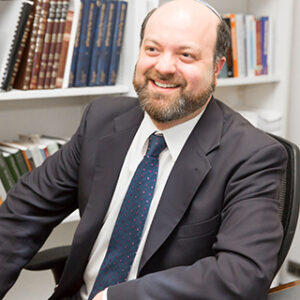
Terumah—The Gift That Elevates
Feb 16, 2024 By Eitan Fishbane | Commentary | Terumah
Sometimes we all feel like we’re giving more than we get, that we do more than our share, or that our individual needs are being sacrificed for the sake of someone else’s happiness. It is an emotional struggle that we encounter in our families and friendships. Why should I give when the other person doesn’t reciprocate in the way that I would want? If I give, will I also get what I deserve?
Read More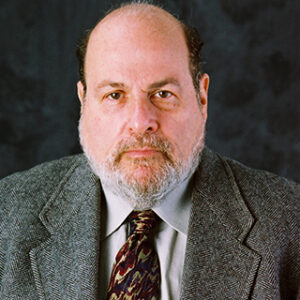
Gold and Incense: For Better and for Worse
Feb 24, 2023 By Stephen A. Geller | Commentary | Terumah
Parashat Terumah begins the long section of the Book of Exodus that deals with the Tabernacle, its furniture and vessels, and the garments of the high priest. The only interruption in this mass of cultic detail is the narrative of the sin of worshipping the Golden Calf and its aftermath in Exodus 32–34. The ritual details continue into Vayikra with the list of sacrifices in the cult.
Read More
Holding God, Our Tradition, and One Another Close
Feb 4, 2022 By Jacob Blumenthal | Commentary | Terumah
As a leader in the Conservative-Masorti Movement, I see my own ambivalence around the use of technology on Shabbat and to form minyanim shared among many communities, clergy, and synagogue leaders. How should we position ourselves? Should the new opportunities provided by these technologies lead the way? Should we temper our enthusiasm? Should we heed Abraham Joshua Heschel’s call to experience Shabbat “independent of technical civilization” and trust in our inherited traditions to hold us together (The Sabbath, 28)?
Read More
Remembering Our Sacred Spaces
Feb 19, 2021 By Julia Andelman | Commentary | Shabbat Zakhor | Terumah
On Shabbat Zakhor—the Shabbat of remembering—we recall the Amalekites’ vicious attack on the Israelites in the desert, in which they targeted not the fighters but the weaker members of the community (Deut. 25:17–19). This year, however, I suspect many of us will be focused instinctively on remembering something else: the anniversary of the coronavirus pandemic turning our lives upside down.
Read More
The Golden Crown of Parenting
Feb 28, 2020 By Lilly Kaufman | Commentary | Terumah
And you shall cover it with pure gold, inside and outside you shall cover it,
and you shall make for it a crown of gold surrounding it. (Exod. 25:11)
These are architectural details of the Ark of the Covenant, the central element of the Holy of Holies, where the tablets of the Ten Commandments will be held and carried. The Ark has a covering of gold, inside and out, and a crown of gold. Four gold rings are attached to it, two to each side wall, and through these rings poles of acacia wood are inserted, which remain in place, even when the Ark is at rest. To what may this Ark be compared? To parents. How so?
Read More
Why God Needs a Dwelling Place
Feb 8, 2019 By Robert Harris | Commentary | Terumah
Recent portions of the Torah have dealt with the arrival of the Israelites at Mount Sinai; the great theophany of God, in which God spoke the Ten Words, or Decalogue; the revelation of the Book of the Covenant, containing the first extended legal section of the Torah; and the covenantal ceremony sealing the everlasting special relationship between God and the people of Israel (Exod. 19–24). Our portion this week turns to the subject of proper worship of God (a subject with which the Torah will be concerned formally for the next eight portions), and opens with a command from God that Moses organize the people to build God a sanctuary in the wilderness: “And the Lord spoke to Moses, saying: ‘Speak to the Israelites that they may take for me a contribution; from everyone whose heart so moves him, take my contribution . . . and let them make me a sanctuary, that I may dwell among them’” (Exod. 25:1–2,8).
Read More
An Edifice Complex for Our Time
Feb 16, 2018 By Marc Gary | Commentary | Terumah
Several years ago, while traveling far from home, I found myself in an affluent suburban community on Shabbat. I decided to attend the local Conservative synagogue in the morning and brought along a friend who I was visiting. The synagogue was newly constructed and architecturally magnificent with a ski-slope ceiling, beautiful stained glass windows, and much ornamentation in gold and silver. The ark was stunning, with a brightly colored tapestry parokhet above which hung a modernistic ner tamid (eternal light). The rabbi stood at a hand-carved lectern and delivered his sermon, which that week happened to be on Parashat Ki Tissa and the lessons of the Golden Calf. As the rabbi reached the climax of his sermon, his voice rose into a crescendo and he declared: “And the Golden Calf lives today!” At which point, my friend leaned over and whispered to me, “Yes, and I think we are sitting in it.”
Read More
Building the Mishkan in Medieval Catalonia
Mar 3, 2017 By Ariel Fein | Commentary | Terumah
Like a contract between artist and patron, Parashat Terumah details God’s commission of the construction of the Tabernacle —a task ultimately carried out by Bezalel, “who was filled with the spirit of God, in wisdom, in understanding, and in knowledge of all manner of workmanship” (Exod. 31:2-3). A combination of God’s commandment and Bezalel’s artistic vision, the Tabernacle exemplifies divine creation through human mediation.
Read More
A Symbol of Peace
Mar 3, 2017 By Daniel Nevins | Commentary | Terumah
The Arch of Titus in Rome is simultaneously one of the saddest and most exciting places for a Jew to stand. It is but a short distance from the Colosseum, the stadium made famous by its cruel sports, built with money plundered from the Jerusalem Temple in 70 CE. Titus’s Arch celebrates the destruction of our Temple, a building designated by Isaiah to be a house of prayer for all nations. A bas-relief sculpture on the arch’s inner walls depicts a sickening scene: the triumphant display of the Temple’s sacred objects, the Menorah most prominent among them, along with a pathetic procession of enslaved Jews.
Read More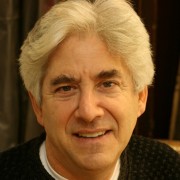
Including the Broken
Feb 12, 2016 By Tobi Kahn | Commentary | Terumah
Arks in contemporary sanctuaries are spiritual descendants of the Ark whose construction and purpose is described in this week’s parashah. The ark above was created for Congregation Ohr Shalom–The Summit Jewish Community Center, in Summit, New Jersey.
Read More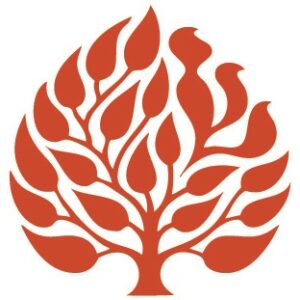
The Construction of the Tabernacle From the Hebrew Republic (1700)
Feb 20, 2015 By Library of the Jewish Theological Seminary | Commentary | Terumah
The Hebrew Republic (De Republica Hebraeorum in the original Latin) was written in the aftermath of Dutch independence from Spain. Petrus Cunaeus principally drew from biblical and Talmudic sources and from Maimonides’s Mishneh Torah in order to reconstruct (or, in reality, construct) the development, structure, and challenges of an ancient Hebrew republic, with the intention of providing a model for the emerging Dutch republic that was both religious and practical.
Read More
Gold and Incense: For Better and for Worse
Feb 20, 2015 By Stephen A. Geller | Commentary | Terumah
Parashat Terumah begins the long section of the Book of Exodus that deals with the Tabernacle, its furniture and vessels, and the garments of the high priest. The only interruption in this mass of cultic detail is the narrative of the sin of worshipping the Golden Calf and its aftermath in Exodus 32–34. The ritual details continue into Vayikra with the list of sacrifices in the cult. The climax of the entire cultic section is Leviticus 9 and 10, where the Tabernacle is dedicated with elaborate rites.
Read More
Terumah – The Gift That Elevates
Jan 29, 2014 By Eitan Fishbane | Commentary | Terumah
Sometimes we all feel like we’re giving more than we get, that we do more than our share, or that our individual needs are being sacrificed for the sake of someone else’s happiness.
Read More
The Tabernacle: Divinity and Practicality
Jan 29, 2014 By Matthew Berkowitz | Commentary | Terumah
Parashat Terumah opens dramatically with a building campaign.
Read More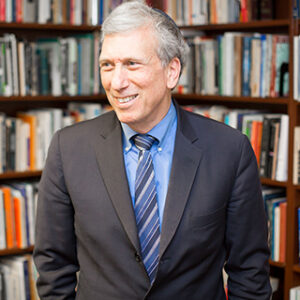
How We Can Build the Synagogue of the Future
Feb 13, 2013 By Arnold M. Eisen | Commentary | Terumah
If you care deeply about the present and future state of the synagogue, as I do, it’s difficult to resist the temptation to draw lessons from the remarkable vision of communal worship set forth in this week’s Torah portion. I do not intend to resist. Three aspects of the divine plan for the Tabernacle strike me as particularly relevant to our contemporary situation.
Read More
From Teaching to Tikkun (Repair)
Jan 13, 2013 By Matthew Berkowitz | Commentary | Terumah
From the details of law to the minutiae of a building plan, Parashat Terumah moves us into the inner sanctum of the Tabernacle.
Read More
Of Willing Heart
Feb 25, 2012 By David Levy | Commentary | Text Study | Terumah
God seems not to be seeking out the work alone, but more the voluntary offering. I find this to be incredibly encouraging.
Read More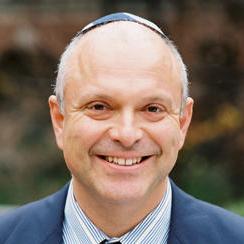
Bringing God into Our Classrooms and Communities
Feb 25, 2012 By Jonathan Lipnick | Commentary | Terumah
Although this week’s parashah focuses mostly on architectural plans, there is significant, inspiring Torah about community building and even classroom dynamics.
Read More
Our Gifts to the World
Feb 5, 2011 By David G. Roskies | Commentary | Terumah
Most visibly, most palpably, this portable structure is what set the Israelites apart from the nations, that bodied forth their difference, their chosenness. It is by carrying out God’s design with such zeal, artistry, and precision, with such an outpouring of gifts, of terumah, that this ragtag of former slaves turned itself into a nation of priests.
Read More
Textual Transmission
Feb 5, 2011 By Abigail Treu | Commentary | Text Study | Terumah
In what font does the Torah need to be written?
A glance inside a Torah scroll reveals that the font is indeed different than what is printed in standard siddurim and other Hebrew texts. It is clearly a beautiful and highly stylized calligraphy, but as this midrash makes clear it is also part of the tradition handed down from generation to generation.
Read MoreSUBSCRIBE TO TORAH FROM JTS
Our regular commentaries and videos are a great way to stay intellectually and spiritually engaged with Jewish thought and wisdom.




